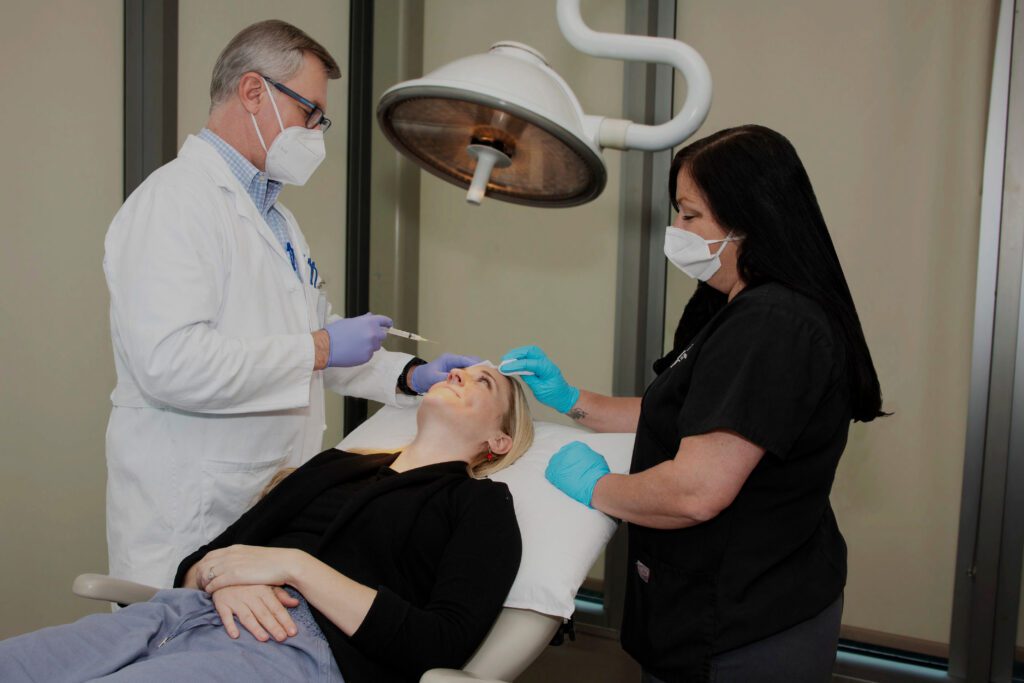
If you’ve considered Botox or dermal fillers but aren’t sure they’re right for you, the following information can help.
This post will outline all you need to know about Botox and derma fillers. They’re a viable option for eliminating the appearance of fine facial lines and wrinkles. They’re also not the only option for managing signs of age.
These include:
- Creases between the brows, known as “11 lines”
- Crow’s feet (next to the eyes)
- Forehead lines
- Laugh lines (around the corners of the mouth)
Specialists administer Botox to the upper face and fillers to the lower face typically. You can have both treatments at the same time.
What is Botox?
It’s the brand name for an injectable neurotoxin. It blocks nerve signals to facial muscles. It can be lethal in large doses. It’s the same compound that causes the food poisoning type, botulism.
Muscles that receive an injection undergo temporary paralysis. These muscles don’t respond to nerve impulses to contract in response to emotions. The result: Fewer lines and wrinkles.
The USFDA has approved similar medications, such as:
- Dysport®
- Xeomin®
- Jeauveau®
Botox has a 90% market share. Physicians prefer it to others because they find it predictable and know how it works. Patients must be 18 years old, but most fall into the 30-60 range.
What are dermal fillers?
It’s another injectable treatment. This one smooths out wrinkles and fills in areas of the face hollowed out with age. Age is deflationary, meaning people lose facial fat over time.
Dermal fillers often fill cheeks, smooth scars, and plump lips. Only skilled professionals should attempt these injections.
Botox can take about 72 days to show full results (although some can become detectable in a week). Usually, patients will receive another treatment at the five-month mark. Patients can see results from fillers immediately.
It’s common to experience bruising and swelling with fillers, especially in sensitive areas of the face.
Are Botox and dermal fillers safe?
By a qualified physician, injections are safe and effective. The American Academy of Dermatology warns against doing them anywhere else.
Salons and spas sometimes offer injection treatment. They don’t have the qualifications of a board-certified plastic surgeon. Plastic surgeons are trained and have advanced knowledge of facial anatomy.
How often do you have to get injections?
The results aren’t permanent. Usually, patients notice the treatment wearing off in four to six months. It’s safe to have treatments more than once.
Dermal fillers can last nine to 12 months, depending on the patient and area targeted. Some brands can last 15 to 18 months.
What are my alternatives to Botox and dermal fillers?
Cosmetic injections have possible side effects. Ask your doctor about what treatment you choose and about the side effects. Bruising and swelling can occur near the injection site.
Serious complications are also possible, including:
- Bleeding at the injection site
- Flu-like symptoms
- Headache
- Nausea
- Skin rashes with itchiness
Consider these alternatives that are not invasive:
- Vitamins. Healthy supplements can help enhance collagen production. Antioxidants can also assist in controlling deterioration from free radicals. Vitamins are accessible and affordable. You should consult your doctor about the types to take and for suggestions on trusted brands.
- Facial creams. Look for antioxidant creams or cell regulators. They can have an impact on collagen production and metabolism in facial skin cells. Speak with your dermatologist for advice on which are most effective. Beware of some that need a subscription.
- Chemical peels. Used to treat acne and skin discoloration, they can also be effective in combating signs of aging. You’ll need 24 hours of recovery time after use, and sometimes as long as 2-3 weeks. Results will appear in about a day, and they’re considered safe and effective. Their results are temporary, and you’ll need to see a skincare specialist. Peeling varies from minimal to severe and might need surgical dressing.
Good skin care is always a good idea
Be proactive in the care of your face. Wear SPF on your face in times of sun exposure, and sunglasses with large lenses. A hat can protect your skin from the sun even more.
Hydrate well, and remove makeup before bedtime. It’s never too early to use a quality anti-aging cream. And a healthy, well-balanced diet can have lasting health effects on more than your skin.
Visit Wilmington Health’s Plastic and Reconstructive Surgery to learn more about what the department offers and Dr. Tor Ljung. Explore monthly specials here.
